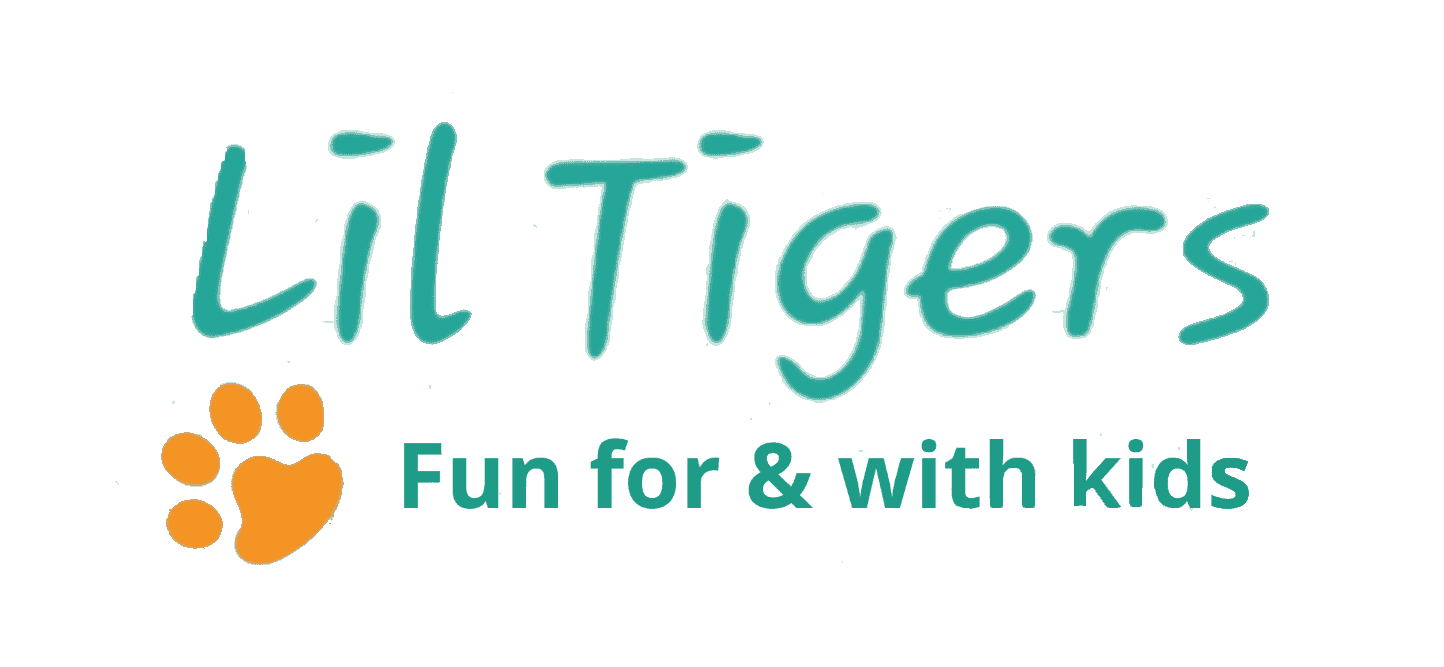Did your kids ever play with Fizzy Ice Cubes? You should give this fun sticky ice experiment a chance.
It is super easy to prepare and a lot of fun.
Read the full instructions below and learn the science behind this fizzy ice experiment.
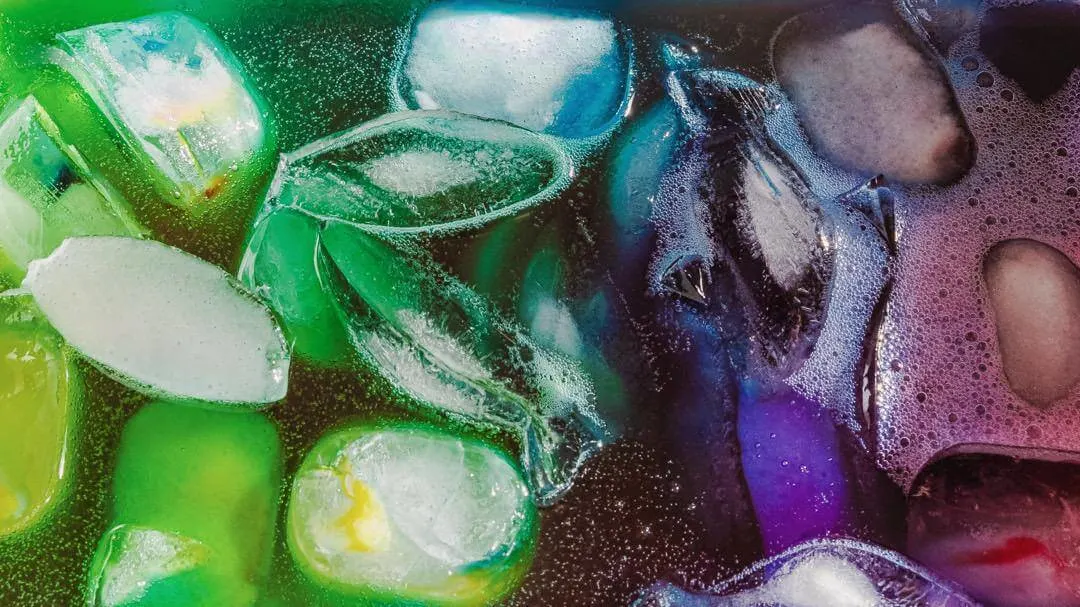
Fizzy Ice Cubes Experiment – DIY Ice Play
Fizzy ice cubes are a fun and engaging ice science experiment. It is easy to prepare, and the kids can continue playing with it after the chemical reaction takes place.
Ice activities for toddlers, or the classic baking soda and vinegar experiment always fascinate children. This ice science experiment combines the two, taking the amazement to the next level.
Benefits of Fizzy Ice Experiments With Kids
Science experiments in general have many benefits for kids. Our fizzy ice cube experiment, in particular, provides the following benefits and makes it the perfect ice activity for preschoolers:
- Fine motor skills
- Observational skills
- Communication and vocabulary
- Concentration and focus
- Critical thinking
To learn more about the Benefits of STEM Education, check out our article.
Are you interested in more kid’s activities, arts & crafts, and science experiments?
I have made it easy for you! Simply join our newsletter now and I will send you new fun for kids.
Subscribe for free
How to Make Fizzy Ice Cubes
But let’s take a look now at this fun activity with ice.
Here is what you will need for our ice science experiment:
Materials for Fizzy Ice Cube Experiment
- Ice cube tray
- freezer
- spoon
- container
- baking soda
- vinegar
- dropper
- food colouring
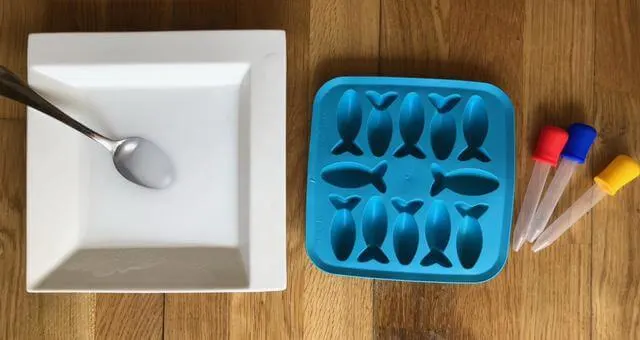
This step-by-step tutorial is here to help you visualize how to make your own fizzy ice experiment.
Preparation for Baking Soda Ice Cubes
- Mix 1 cup of baking soda with ½ a cup of water in a bowl and stir.
- Use a spoon to divide the mixture evenly over the ice cube tray.
- Place drops of food coloring in each of the individual ice cubes (optional).
- Freeze until the baking soda ice cubes are frozen.
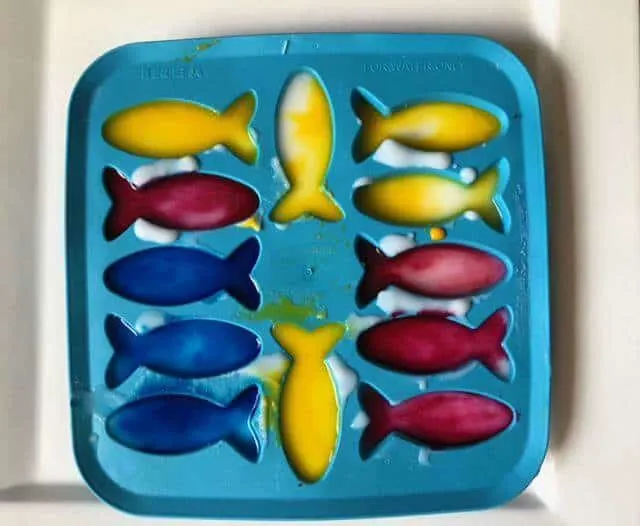
Fizzy Ice Cubes Instructions
Step 1: Place Baking Soda Cubes on a Tray
Help your toddler to cover the base of a tray in the baking soda ice cubes.
Step 2: Add Vinegar
Add the vinegar with a dropper. Encourage them to notice the smell.
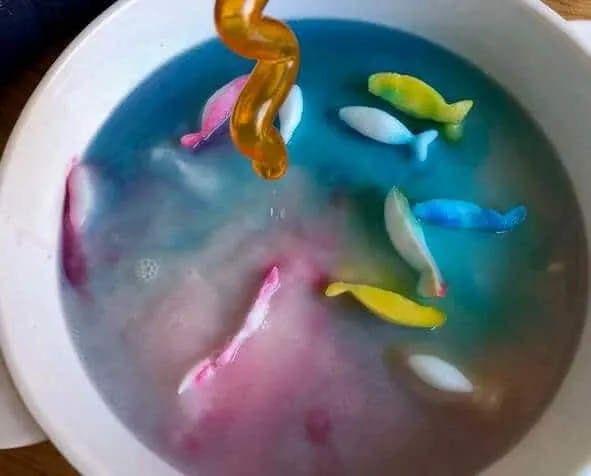
Step 3: Observe the Carbonated Ice Cubes
Observe together how the ice fizzes and changes when two colors mix.
Step 4: Add More Vinegar
Drop more vinegar onto the fizzy vinegar ice cubes.
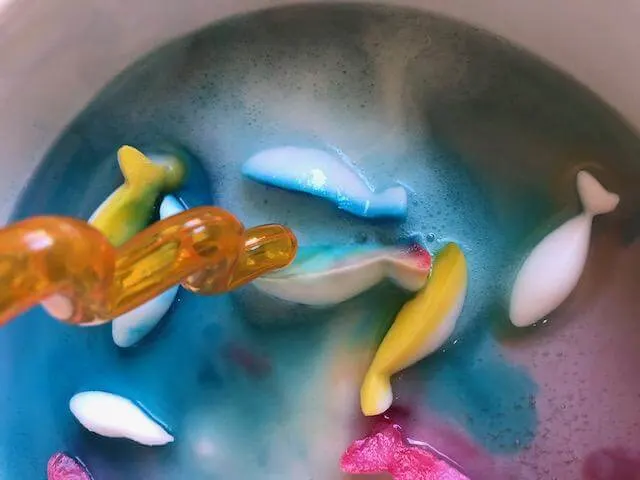
Step 5: Watch the Vinegar Ice Cubes
Watch the fizzes and rainbow colors form.
Step 6: Repeat Step 4
You can keep doing this until all the fizzing baking soda cubes melt.
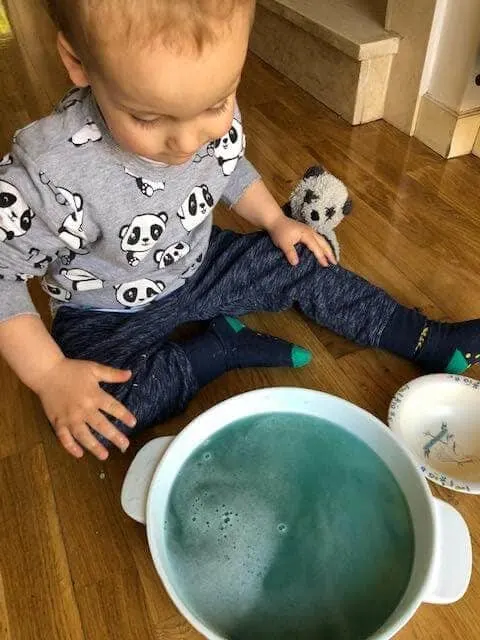
Fizzy Ice Cupe Science Experiment Tips
The process of this sticky ice experiment is great for children to observe:
- change in color (colour mixing)
- fizzy ice cubes (gas-produced)
- physical change (ice melting)
- formation of a solid (water to ice in the preparation).
This cool ice experiment is one that your pre-schooler will want to repeat. Learning can be so much fun when it´s play-based.
Do your kids enjoy STEM activities? Then try our popular Dancing Grapes Experiment, Rainbow Cloud Activity, Borax Chrystal Ornaments.
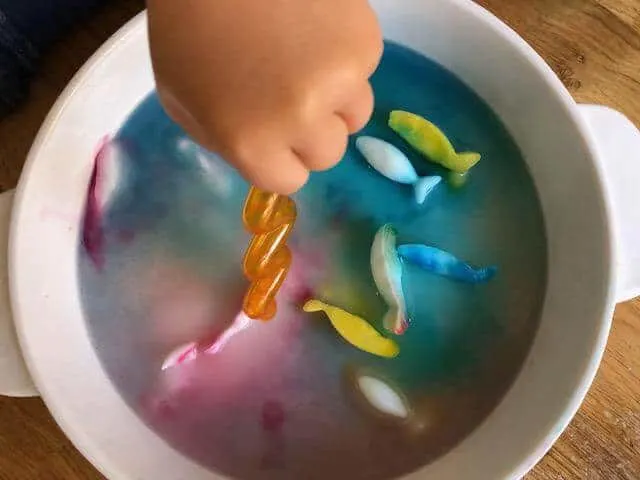
Science Behind This Fizzy Science Experiment
The Science of the Chemical Reaction
When you mix vinegar and baking soda you will see a lot of bubbling and foaming. This is because a chemical reaction is happening between the baking soda (sodium bicarbonate), a base, and the vinegar (acetic acid), an acid.
What you are seeing is an acid/base reaction. The reaction produces carbon dioxide gas (CO2) which is why you see all the bubbles.
Chemical Reactions (Changes)
But what is a chemical reaction?
Chemical reactions are changes in a substance that create something new. It can´t go back (be changed) to its original form.
There are four main clues that a chemical change has occurred.
- There is a formation of gas (you see fizzing or bubbling).
- The reaction causes heat, light, or smell (odor) to be emitted.
- You see a color change.
- A solid is formed during the change.
Pin This Preschool Ice Experiment
Don’t forget to save this ice experiment for preschoolers on Pinterest for later! Be sure you are following along with Lil Tigers.
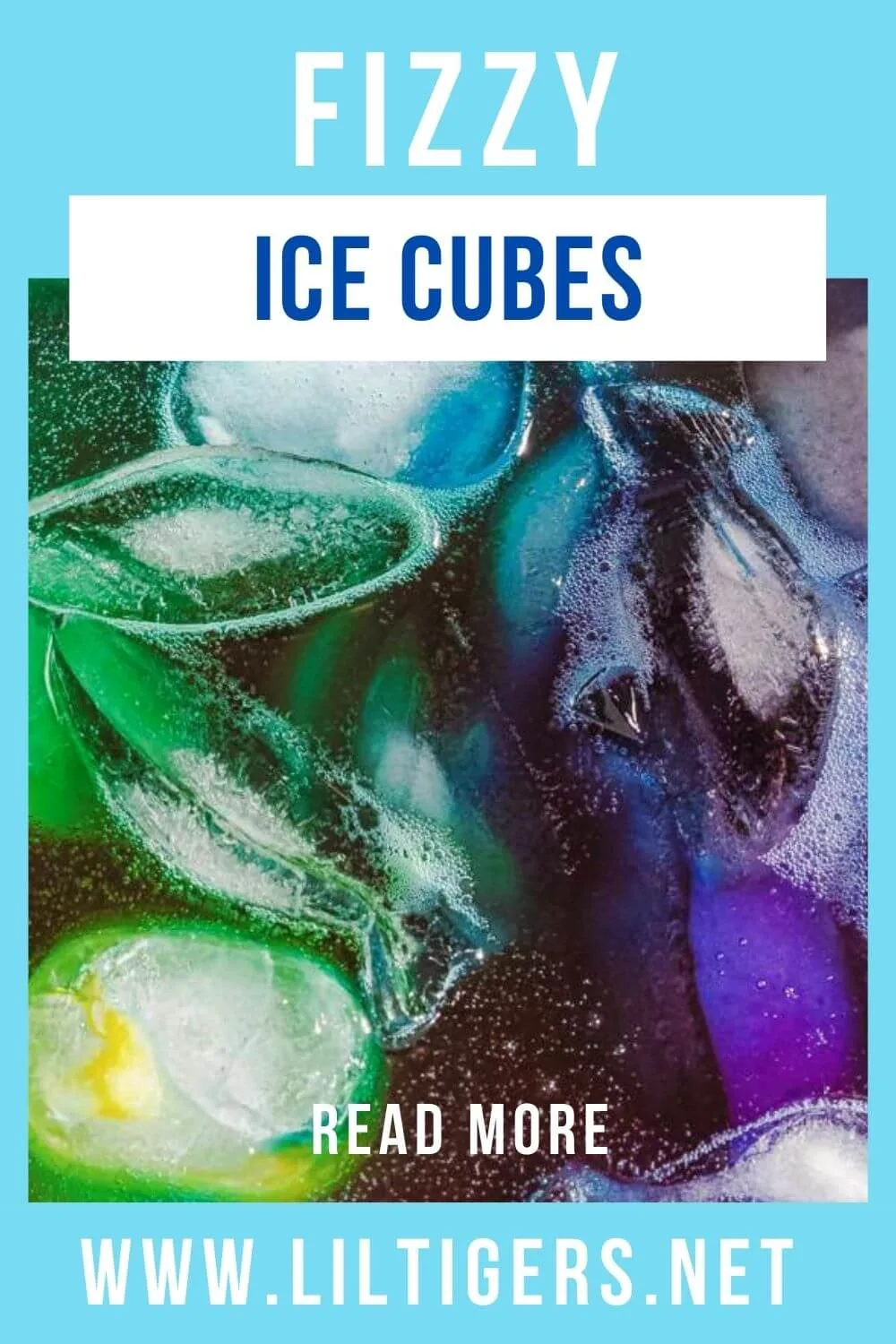
About The Author

Lisa Forsythe is a teacher, a mum, and author of Simple Activities for Toddlers: A practical Play-At-Home Handbook for Parents.
Caring for her toddler Thomas, throughout the pandemic, gave her the inspiration to create @simpletoddleractivites on Instagram to offer other parents activity ideas. This has led to her writing her debut book to share her expertise with other parents.
For more play-based learning ideas like this one, check out Simple Activities For Toddlers, Lisa Forsythe.
Blog: Simple Toddler Activities
Now I would like to hear from you!
How did your children enjoy this easy ice cube kids experiment?
Either way, let me know by leaving a comment below right now.
I would love to hear from you!
Fizzy Ice Cubes Experiment
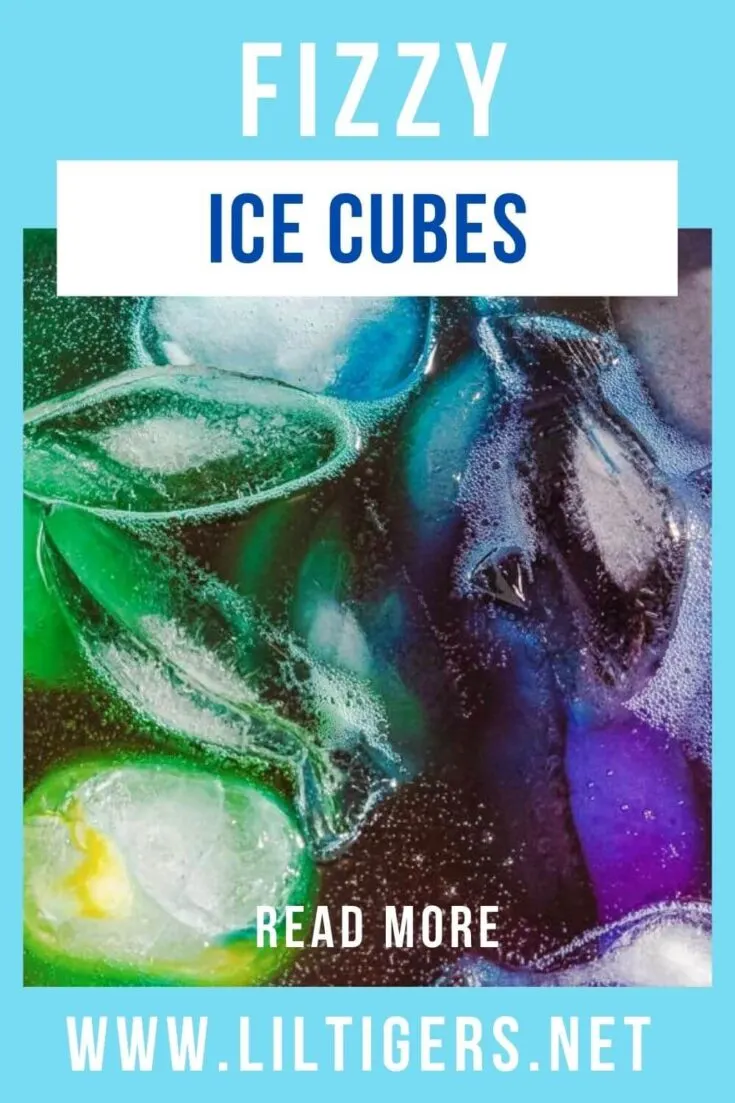
How to make fizzy ice cubes
Materials
- Ice cube tray
- freezer
- spoon
- container
- baking soda
- vinegar
- dropper
- food colouring
Instructions
- Mix 1 cup of baking soda with ½ a cup of water in a bowl and stir.
- Use a spoon to divide the mixture evenly over the ice cube tray.
- Place drops of food colouring in each of the individual ice cubes (optional).
- Freeze until the baking soda ice cubes are frozen
- Help your toddler to cover the base of a tray in the baking soda ice cubes.
- Add the vinegar with a dropper. Encourage them to notice the smell.
- Observe together how the ice fizzes and changes when two colours mix.
- Repeat step 6 till ice is dissolved.
